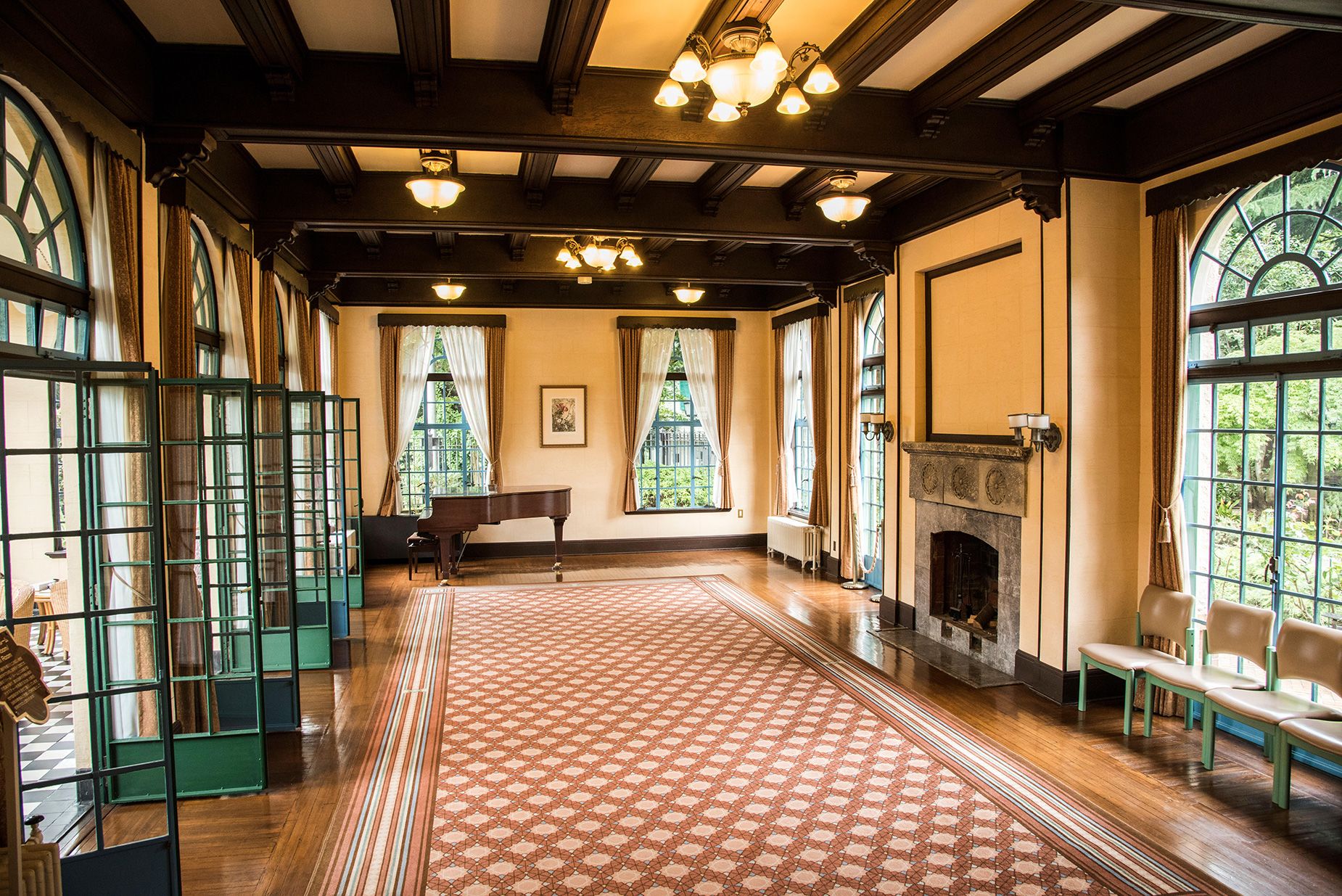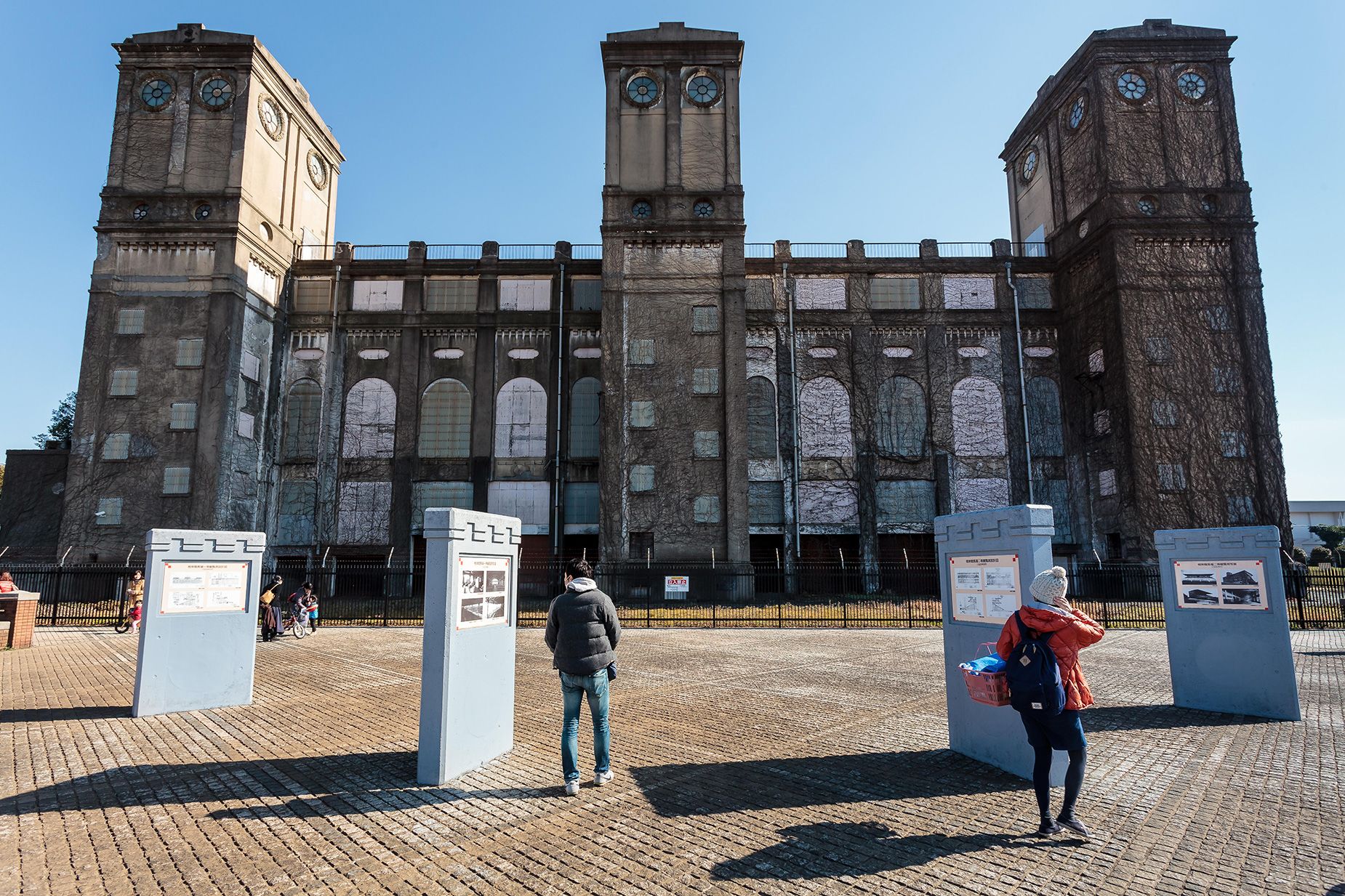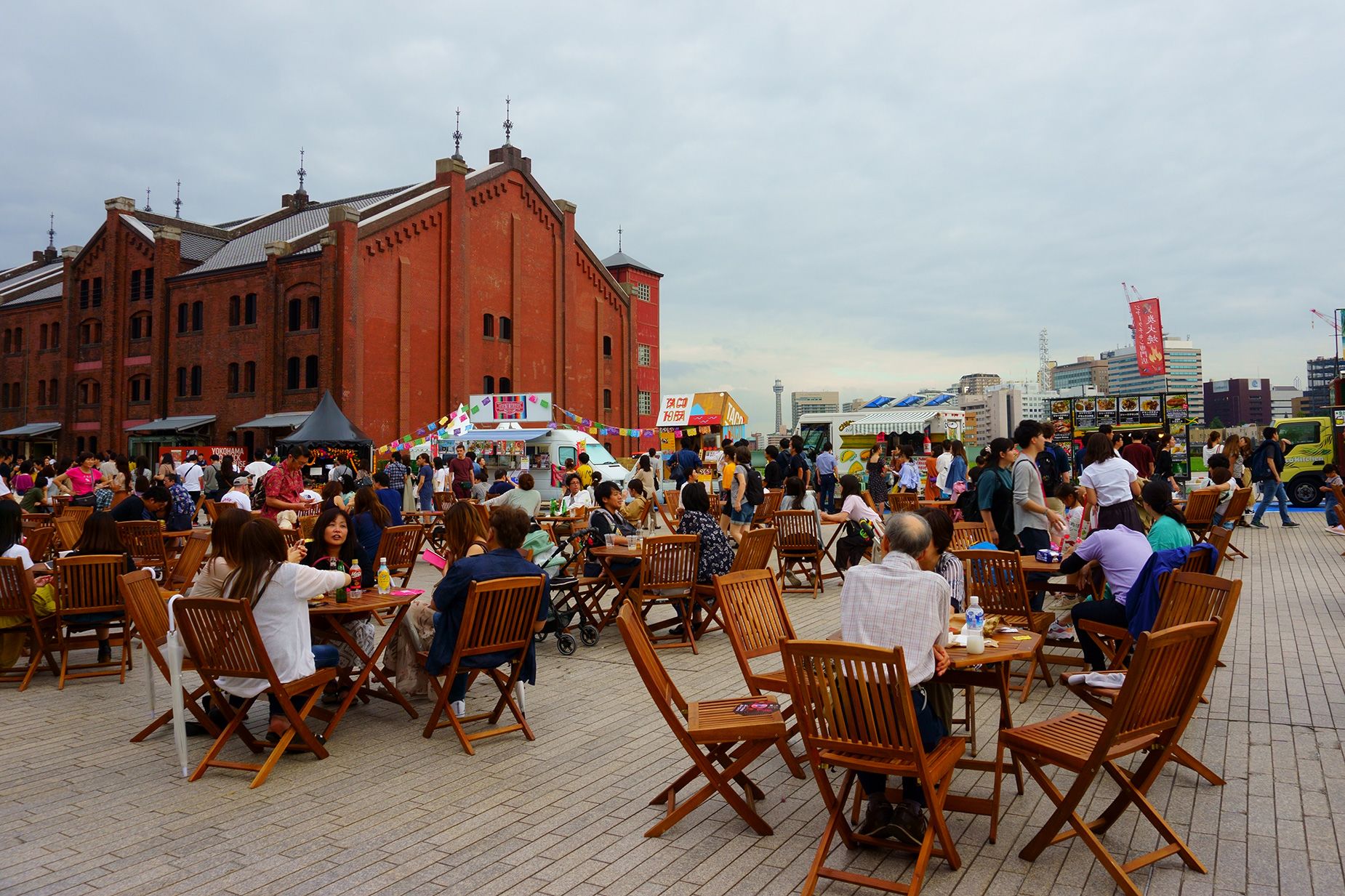Of all the cities in Japan, Yokohama is without doubt the most international and cosmopolitan.
While many other urban centers have built over their past in the rush to modernize, Yokohama has gone to great lengths to preserve its history as the port that opened the country up to the outside world in the 1850s.
Less than 30 miles southwest of Tokyo, it has skyscrapers and retail and nightlife districts, but they exist in harmony with ancient wooden temples, the homes of some of the first foreign traders to settle in Japan and other throwbacks to a colorful – and sometimes turbulent – past.
When US Navy Commodore Matthew Perry sailed into the bay just south of Yokohama in 1853, tasked with convincing the shogun to end his policy of national isolation, this was a fishing village of around 100 homes.
By the end of the decade, it had been transformed into a gateway to Japan and a boomtown for traders, immigrants and adventurers.
Today, it’s Japan’s second-most populous city but thankfully the heart of Yokohama is still relatively compact and much can be explored on foot – with the past around every modern corner.
Chinatown and the Korean district
Given Japan’s proximity to China and the importance of the tea and silk trades in the 1800s, it comes as little surprise that many thousands of Chinese settled in Yokohama, building an enclave in the Kannai district a few blocks back from the waterfront.
The extremities of the settlement are marked by four paifang-style Chinese gates, intricately decorated with deities, dragons and tigers. There are more than 600 businesses in the bustling area, including restaurants serving authentic cuisine, supermarkets piled high with imports and stores selling inexpensive trinkets.
There are two colorful temples, where locals still go to light incense sticks and pay their respects to Chinese gods. They are also the focus of celebrations during the traditional Lunar New Year celebrations, when dragon dancers and musicians parade through the streets.
A little further inland is the smaller Korean district of the city, where the signs are in “hangul” characters and the restaurants serve bibimbap and cloudy makgeolli rice wine.
Smaller than Chinatown, the district is bounded to the west by the Ooka River, the entire area a riot of pink during the cherry blossom season in early spring as the petals from the hundreds of trees that line the banks catch the wind.
The Bluff

The first European and American arrivals in Yokohama were required by the shogun to live within a gated settlement in Kannai, where the city’s baseball stadium stands today. But over time they were permitted to build new homes in the most sought-after parts of the city.
Wealthy businessmen and traders soon began to congregate their homes on a rise directly to the south of the community, known as The Bluff, giving them views over the port and the benefit of cool sea breezes during the hot and humid summer months. And while the view has changed immeasurably in the last 150 years, some of these properties remain.
One of the grandest is an American-Victorian style building of clapboard and large windows that was built on the site of the former Italian consulate for a Japanese diplomat who served as Tokyo’s consul general in New York. Wisely, the designers chose to retain the expansive Italian gardens and water features.
Berrick Hall was built for British trader B.R. Berrick in 1930 and is the largest surviving building in the area. In a Spanish style and listed as a Historic Building of the City of Yokohama, it has a ballroom on the ground floor and the old-fashioned kitchen has been faithfully preserved.
A little further down the road is the Bluff No. 234 building, which dates from 1927, as well as the city’s Anglican Christ Church, which was founded in 1863, just a few years after the opening of Yokohama as a treaty port. The Yokohama Sacred Heart Cathedral has stained glass windows that reflect the city’s port heritage and opened its doors one year earlier, making it the oldest church in Japan.
The Foreigners’ Cemetery
The early decades of the last century were marked by rapid economic growth across Yokohama, but that came to an abrupt halt on September 1, 1923, when the magnitude 7.9 Great Kanto Earthquake rattled eastern Japan.
The tremor caused widespread damage and much loss of life, with many of the victims buried in the Yokohama Foreign General Cemetery, which slopes down from the top of The Bluff.
A single headstone bears the names of 10 priests who all died on the day of the disaster. Another marker nearby has the names of half-a-dozen Catholic sisters. Leonardus Van Der Polder, who was born in Rotterdam in 1851, is buried here alongside his wife, Annie, yet more victims of the tragedy.
Other older tombstones also bear the scars of the quake, with many cracked and cemented back together after collapsing in the violent tremors.
A stroll through more than 4,200 grave markers is a fascinating walk through history. Renowned war correspondent Dixie Tighe, of the New York Post, is buried here after dying in Tokyo in 1946, close to British engineer Edmund Morel, who constructed the first railway line from Yokohama to Shimbashi, but died only one year after arriving in Japan in 1870.
Beneath a tree is a bust and gravestone of Hermann Grauert, who built the Catholic cathedral and survived an attempt on his life by a samurai disgruntled at growing foreign influences in Japan.
The Studio Ghibli connection
Hayao Miyazaki is rightly revered as a genius of Japanese animated cinema and set his 2011 film “From Up on Poppy Hill” in 1960s Yokohama.
The story revolves around the port and sees the high school protagonist, Umi Matsuzaki, raising signal flags that read “I pray for safe voyages” on a pole on The Bluff.
The pole and the flags can today be found flying in Harbor View Park.
The Emperor’s racecourse

A couple of miles to the southwest is Negishi Forest Park, dominated by the towering grandstand of the former Nippon Race Club.
The grandstand is all that remains of Japan’s first Western-style horse racing track, which was in its pomp in the 1930s.
Panels to the rear of the stand show it in its heyday, with lounges overlooking the track, the judges’ stand and betting booths. Emperor Hirohito (1901-1989) was apparently a fan of the races and visited on several occasions.
In the years after Japan’s defeat in World War II, the entire racecourse was taken over by the occupation authorities and served as a military base. The park was returned to the city of Yokohama in the 1970s and is famous for its cherry blossoms in the spring, while the Equine Museum of Museum tells the story of horse racing in Japan.
Yamashita Park
In the aftermath of the 1923 earthquake, the crumpled debris of Yokohama’s buildings and infrastructure was pushed into the sea off the front and, over the years, transformed into Yamashita Park. The rose garden is well-tended and the lawns are perfect for summer picnics and buskers performing their tricks.
Moored off the stone walled front is the Hikawa Maru, a luxury passenger liner that was launched in 1929 to operate on routes to the west coast of the US and transported, among others, Charlie Chaplin and Prince and Princess Chichibu.
The vessel – known as the “Queen of the Pacific” – served as a hospital ship during World War II and then spent another six years repatriating Japanese troops after Tokyo’s surrender.
A floating museum today, visitors can admire the restored art deco cabins and interiors and, in the summer months, enjoy a cold beer on the stern deck beer garden.
The Red Brick Warehouse district

Along an elevated path at the northern end of the park that used to serve as a railway for the port is a complex of red brick warehouses that would have been a hive of activity a century ago.
Too small for the cargoes of modern ships, the godowns have been transformed into boutiques, bars and restaurants, with the large open space used for events and exhibitions, from beer festivals to vintage car shows.
From the front here, passenger ferries zip across the harbor, giving visitors a chance to see the city from the water.
Modernity in Minato Mirai
In sharp contrast to Yokohama’s historic buildings are the gleaming steel-and-glass skyscrapers of Minato Mirai, built on reclaimed land over the last 30 years and linking the original port area with Yokohama Station.
Cheek-by-jowl alongside brand-name shops and malls, restaurants and bars, hotels and convention centers is one of the tallest Ferris wheels in the country, as well as the Cosmo World theme park and a new cable car.
Credit: Source link